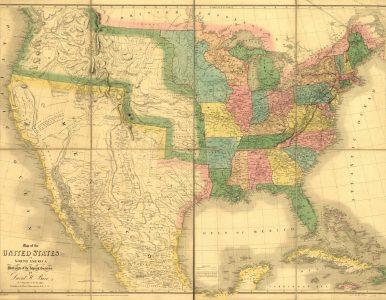The Battle Hymn and American Authoritarian Style
by Catherine Greenblatt and Craig Awmiller, published July 2020. This piece served as the Battle Hymn’s “About” page from July 2020 through the first few weeks of the Biden administration.
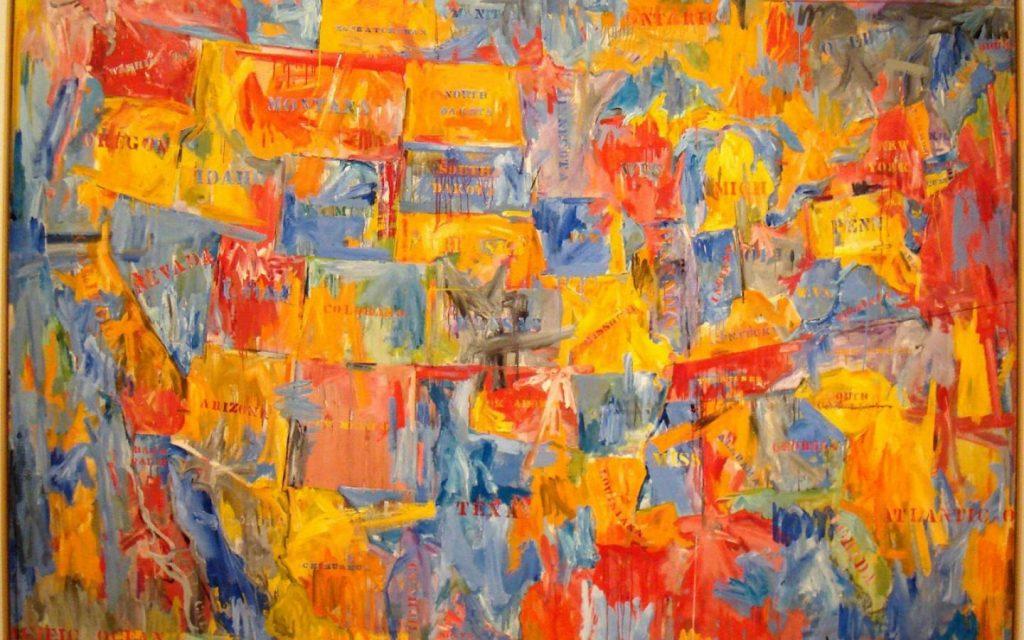
“Everybody has their own America, and then they have pieces of a fantasy America that they think is out there but they can’t see.”
Andy Warhol, 1985
The Battle Hymn explores the current surge of authoritarian style in the United States of America. It is written and produced in the Pacific Northwest (Seattle and Portland), where hip urban green quickly runs to rural white populism, where Antifa and Patriot Prayer both thrive and incite one another, and where the meaning of the West is in perpetual, agonistic negotiation. These antagonisms, broadened to relay across national and historical scales, are the essence of The Battle Hymn.
Are you seeing what I’m seeing? A golden escalator ride, June 15, 2015. Yes. I see that, too. The army general on stage, inciting the crowd, the crowd chanting back, do you see that? Yes, yes, I see it. There was plenty to see, already. And the moment turned into an era, as we know too well. At the beginning, though, lest we forget, it was hard to know exactly what it was a moment of. Entertainment or real time disaster? Both? Neither? Things were as yet more heavily coded, merely implied. A declaration of cruelty’s open season, signaled with a wink at the camera. We had to decipher and predict. Predictions were wrong. We were not prepared, semiotically speaking, to read what was happening.
I came to explore the wreck. The words are purposes. The words are maps. I came to see the damage that was done and the treasures that prevail. Adrienne Rich, “Diving into the Wreck,” 1973
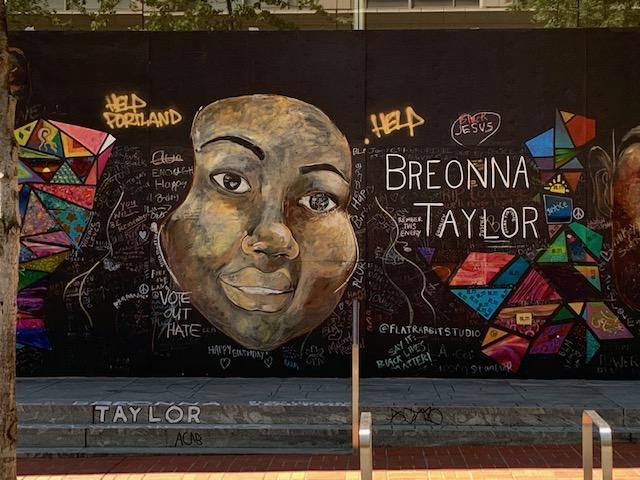
If it was a movie, The Battle Hymn would be full of lap dissolves, moments when two things can be seen in one frame, one thing slowly becoming the other, one moment in time leading to another. That is the way we see the persistence of the past and its resonance in the present. It is an ongoing work, composed with whatever we have at hand at any given time. The speed of events has outpaced our grasp of them, an underlying condition impossible to contain. Some of the writing here may therefore eventually miss the mark, seem irrelevant, or lead us astray. We stand behind these errors as the potential cost of witnessing an anti-democratic precipice, one made all the more dangerous by clouds of propaganda and state-sponsored disinformation. To that end we’ve dated our posts so that they can be pinned to their moment in time.
Our writing migrated from feverish text messages and social media posts to google docs and folders, elaborate worknotes and files, records of daily observations and rough ideas about them, ethnographic field notes of a culture we hadn’t exactly seen before and didn’t know how to name. “Lock her up!” Misogyny and a vigilante rallying cry. “I alone can fix this.” A cult of personality, a whiff of Mussolini. Global warming is a “hoax” caused by “the Chinese.” Anti-science, xenophobia, off-leash capitalism and self-dealing corruption, rank propaganda, more corrosion of norms. “We have some bad hombres here and we’re going to get them out.” Anti-immigrant,racist inflammation, visions of a police state, coming soon. “She had blood coming out of her everywhere.” More misogyny and humiliation. “I watched in Jersey City, New Jersey, where thousands and thousands of people were cheering” as the World Trade Center collapsed. Pure fiction, but does it matter? Anti-Muslim, pro-Christian, white nationalism. “You should have seen this guy….” Contempt for difference, disability, and any perceived weakness. “I love the uneducated.” Contempt for the poor and the working class, while acting as the savior of the same. And Charlottesville: “good people on both sides.” One authoritarian box after another: checked, checked, checked.

American history is longer, larger, more various, more beautiful, and more terrible than anything anyone has ever said about it.
James Baldwin, “A Talk to Teachers,” 1963
Our observations led to more coherent, organizing themes: growing doubt of climate science and vaccines and other forms of anti-science, culminating in the now catastrophic response to the coronavirus pandemic; transformation of political discourse into reality-free sloganeering, in the rituals of the White House Press Briefing for example, and the attack on the free press principle; the rise of “unreliable narration” as a dominant form of storytelling; an increasingly stark, mythic, and anti-immigrant rhetoric that emplots “true” Americans against “false” ones; more and more frequent deployments of aggrievement and nostalgia in racialized terms; aggressive misogyny coupled with retrogressive gender norms; tribalism, polarization, and the erosion of democratic institutions, both written and unwritten. Finally, an ethical numbing and metastasizing cynicism:
Mass propaganda discovered that its audience was ready at all times to believe the worst, no matter how absurd, and did not particularly object to being deceived because it held every statement to be a lie anyhow. The totalitarian mass leaders based their propaganda on the correct psychological assumption that, under such conditions, one could make people believe the most fantastic statements one day, and trust that if the next day they were given irrefutable proof of their falsehood, they would take refuge in cynicism; instead of deserting the leaders who had lied to them, they would protest that they had known all along that the statement was a lie and would admire the leaders for their superior tactical cleverness.
Hannah Arendt, The Origins of Totalitarianism, 1948
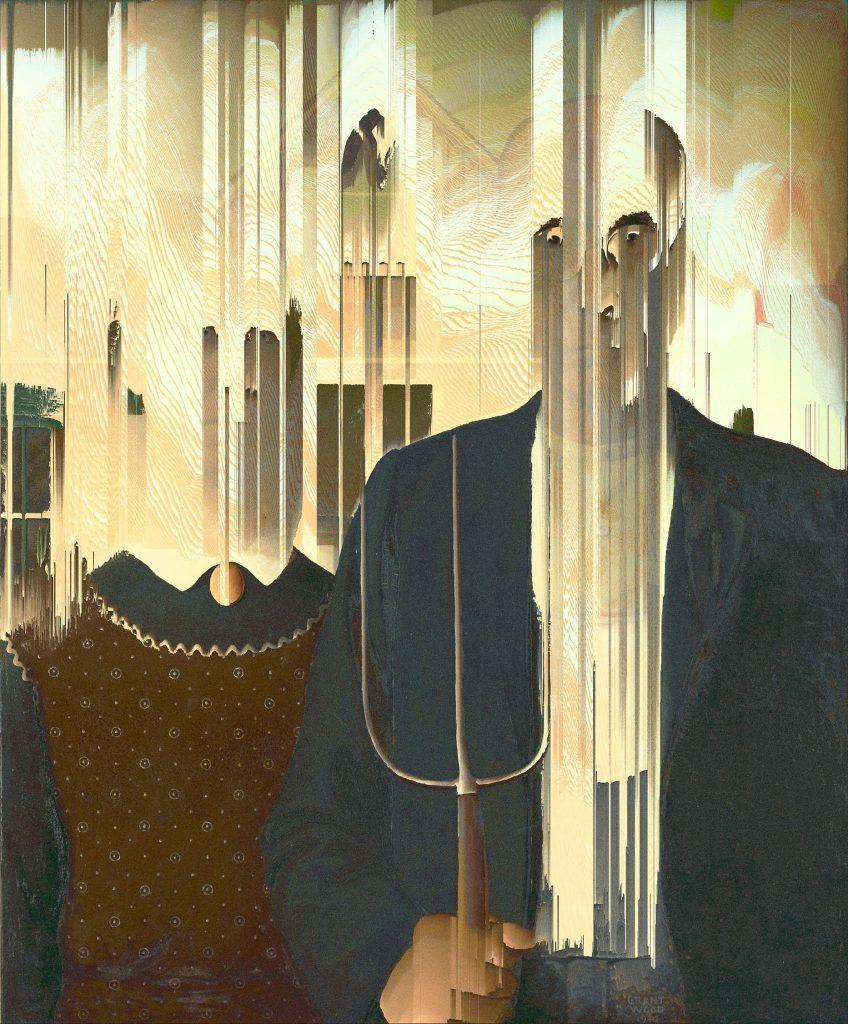
The project takes shape as a kind of homegrown study of fascist aesthetics. We find ourselves looking at a specific constellation, at amalgams and intersections of images and ideas and stories that constitute a distinctive style of authoritarianism. It seems strange to say, but we have come to understand that we do it differently here. It looks different; it wears different clothing; it speaks with different accents and in a local idiom with a notably ecstatic, anti-urban flair-and-feel. We see that this style shares some deep structural similarities to other, earlier fascist gestures: dark mythic storylines, gauzy nostalgia, theatrics of law and order, vilifying plots of immigrants, brutal misogyny and rigidification of gender–all quite often (mis)understood as European affairs.
The word “style” may suggest ornamentation, superficiality, and decorative excess, but on the contrary we perceive no absolute distinction between style and substance, medium and message, content and form. Concentrating on “the content of the form,” as the late, great Hayden White phrased it, we see the formal arrangement of signs and symbols in both fascist aesthetics and in American authoritarian style as essential to the communication of authoritarian ideas but to the consumption of those ideas and ultimately the populist identification with them. Style is the medium and the messenger.
In the United States, we craft fascist gestures according to our mythos as a nation born of self-liberation from tyranny, spiked with messianic American exceptionalism. Our national obsession with perpetual rebellion against authority bleeds into much of what we say and how we say it. These stylistic habits pulse through American history and have made Donald Trump an unusually effective medium for the American Authoritarian message. But made-in-America totalitarian looks and slogans most certainly predate him. Throughout the project, we try to peel away the many historical and representational layers of American authoritarian style by framing individual stylistic moments– images, events, myths, landscapes–and rendering them in historical perspective.
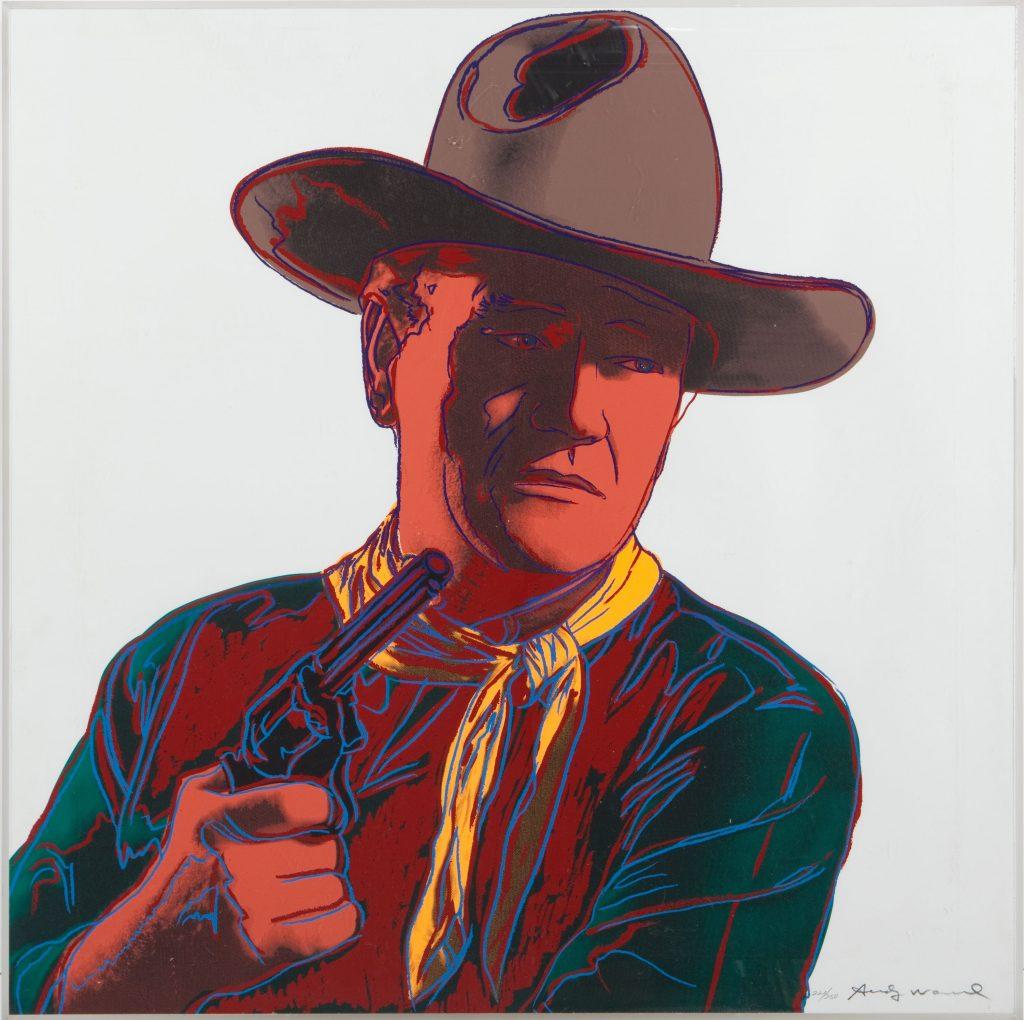

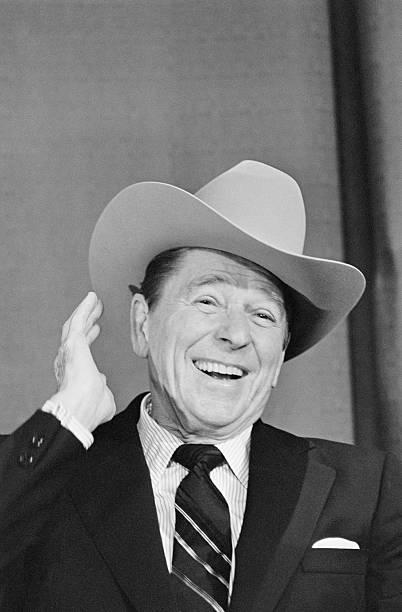


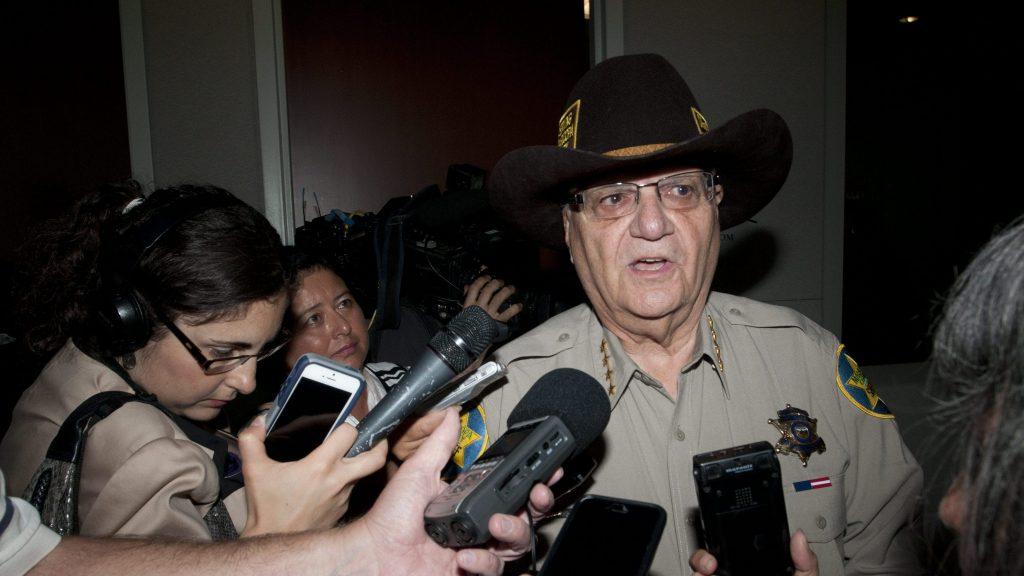
This Pandora’s box is so full of such tightly compressed contents, the lid practically flies off of its own accord. We’ve sorted the pieces in four rough categories: Here are Bedtime Stories, the tales we tell to sustain the regimen of self-hypnosis. Like the one about the White House Press Secretary of the Demure Cross who swore she would never lie and so she never did. Here are some bigger than life American Characters, such as the Cowboy Messiah, the law man who is above the law, who saves the town, and who bears more than a little resemblance to old, renegade Sheriff Joseph Arpaio of Maricopa County, Arizona, whose deployments of ICE raids became the model national anti-immigrant policies and practices. Here are some National Anthems on vinyl, mixed tapes, and in digital files which, when played loudly and often enough, inspire the troops to emote and do things like write fascist poetry about cleaning up the hellish, anarchic streets of Portland, Oregon. In a pandemic time, we see that Americans live with Underlying Conditions, like the forced exile of science from the channels of power, which puts all of us, adjusted for skin color and income, at greater risk of losing our lives.
The future of The Battle Hymn hangs in the balance of what comes next, which, beyond reasoned guessing, of course remains unwritten.. If past be prologue, the tensions we have begun to identify will continue to play out as a new lost cause, for American Authoritarian Style never quite dies out but goes dormant, gets quieter, changes shape, retreats and recedes. The Battle Hymn’s anthems and fugues will continue to play, perhaps in different keys and compositional variations and arrangements.
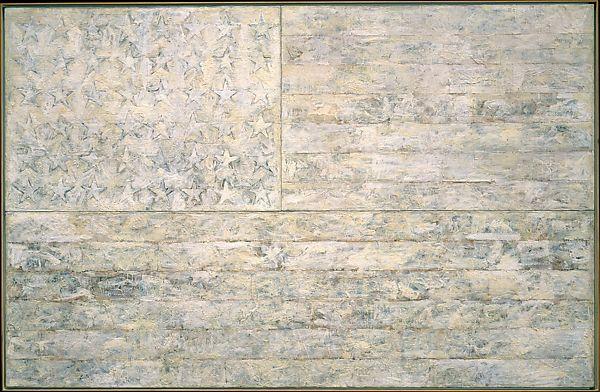
The Battle Hymn is rich in citation. We make every effort to acknowledge the artists, photographers, photojournalists, writers, musicians and composers of the work we draw upon. We provide image credits and direct citations of published work in the body of each post. The credits pages are stand-alone, work-in-progress documentary essays as well as citational spaces. In addition, more general sources are cited by blog in the credits, giving proper discursive context to our writing and research. We welcome any additional information regarding unidentified images or texts or sounds and will promptly provide appropriate acknowledgement when received.
Design and Art Direction: Catherine Greenblatt
Archive: Craig Awmiller
Writing: Catherine Greenblatt and Craig Awmiller

